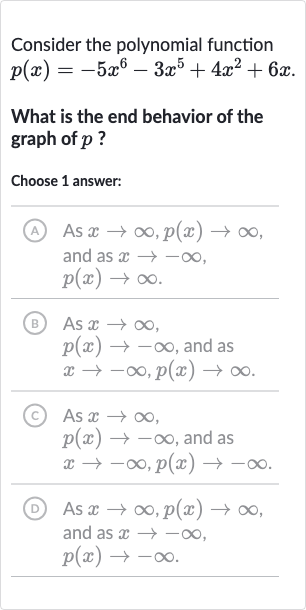Full solution
Q. Consider the polynomial functionWhat is the end behavior of the graph of ?Choose answer:(A) As , and as , .(B) As , , and as .(C) As , , and as .(D) As , and as , .
- Leading Term Exponent: Since the leading term has an even exponent, the end behaviors at both ends of the -axis will be the same.
- Coefficient Sign: Because the coefficient of the leading term is negative, the graph will go down on both ends.
- End Behavior: So, as approaches , approaches , and as approaches , also approaches .

